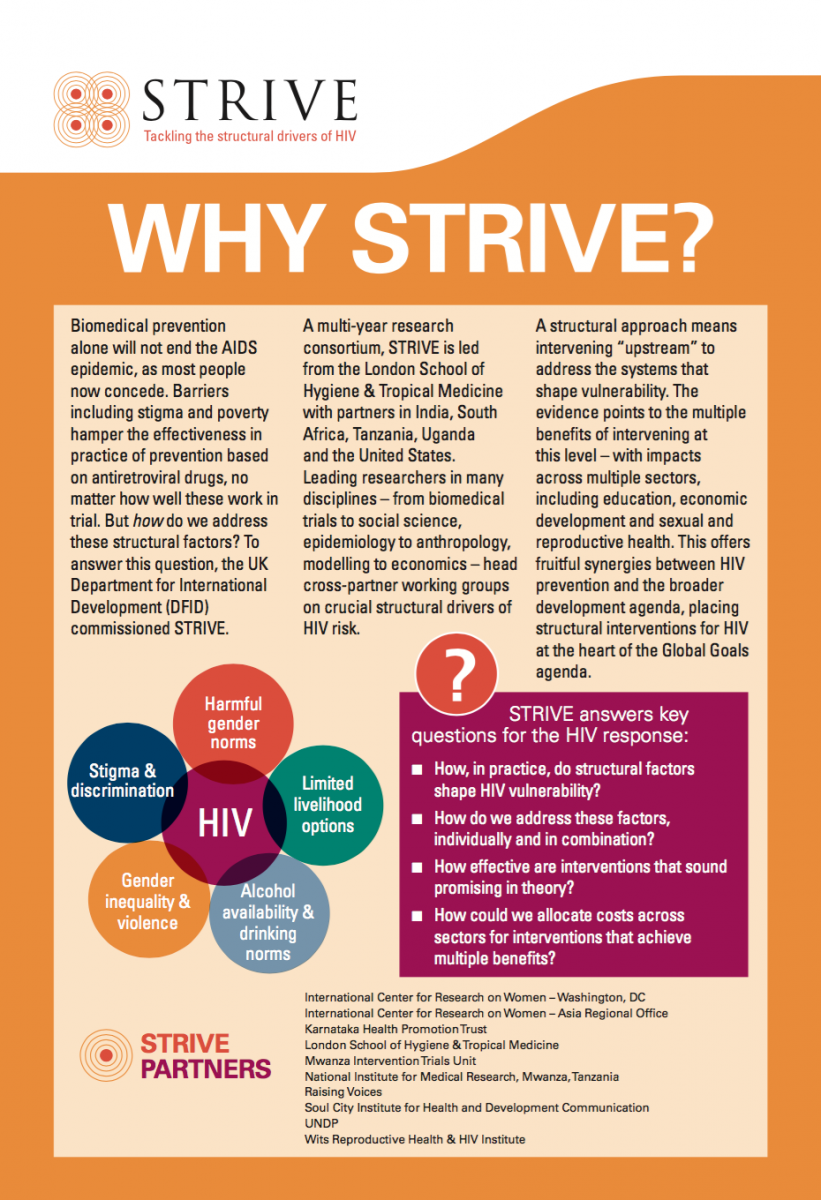Tackling HIV-related stigma and discrimination is critical if we are to reduce and even end the AIDS epidemic. Effective stigma reduction requires an accurate understanding of the different ways in which it operates and standardised measures to identify it and design and monitor efforts to address it.
Measurement brief: Measuring HIV stigma and discrimination
HIV-related stigma and discrimination continue to be experienced across the globe, impeding access to and scale-up of HIV prevention, treatment, care and support programmes. In 1987, HIV stigma was described as the ‘third epidemic’, coming after those of HIV and AIDS and no less crucial. While many individuals, organisations and governments have worked diligently to reduce HIV-related stigma and discrimination, such efforts are not implemented at a scale necessary to have a significant impact on HIV outcomes, thus stigma continues to fuel HIV transmission.
Stigma framework and measurement
What do we know about HIV stigma and rights-based prevention?- Anne Stangl
Stigma undermines effective HIV prevention and treatment: this is universally acknowledged. But what can be done to reduce stigma and its impact on HIV infection? To answer this question, Dr Anne Stangl presents two systematic reviews of the evidence on:
Adherence and the Lie in a HIV Prevention Clinical Trial
The lie has been presented as a performance that protects identities against moral judgement in the context of power imbalances. Within doctor-patient interactions, lies can reinforce but also challenge power relations:
By not fully disclosing diagnoses or side effects, medical practitioners exert their authority, but there is scope, too, for the patient’s resistance: the patient can remain silent or lie.
A systematic review of interventions to reduce HIV-related stigma and discrimination from 2002 to 2013: how far have we come?
HIV-related stigma and discrimination continue to hamper efforts to prevent new infections and engage people in HIV treatment, care and support programmes. The identification of effective interventions to reduce stigma and discrimination that can be integrated into national responses is crucial to the success of the global AIDS response.
Reducing violence and increasing condom use in the intimate partnerships of female sex workers: study protocol for Samvedana Plus, a cluster randomised controlled trial in Karnataka state, south India
Female sex workers (FSWs) are at increased risk of HIV and STIs compared to women in the general population, and frequently experience violence in their working and domestic lives from a variety of perpetrators, which can enhance this risk. While progress has been made in addressing violence by police and clients, little work has been done to understand and prevent violence by intimate partners (IPs) among FSW populations.
HIV-related stigma and universal testing and treatment for HIV prevention and care: design of an implementation science evaluation nested in the HPTN 071 (PopART) cluster-randomized trial in Zambia and South Africa
HIV-related stigma and discrimination can act as barriers to the implementation of successful HIV prevention programmes.
Why STRIVE?
What does the STRIVE research consortium do, and why? What are the over-arching messages from STRIVE's research and analysis? And how can you access STRIVE activities, materials and learning?
Download the brochure to find the answers.

ASSHH UK Conference: 'Critical conversations about HIV'
On 20 June 2016 STRIVE co-hosted a one-day meeting with ASSHH UK, a network that aims to bring together UK-based researchers working on HIV in the humanities and social sciences. The meeting was organised by researchers from the London School of Hygiene & Tropical Medicine, University of Glasgow, University of Northampton, Goldsmiths and the School of Oriental and African Studies, with a small grant from the Wellcome Trust as well.



